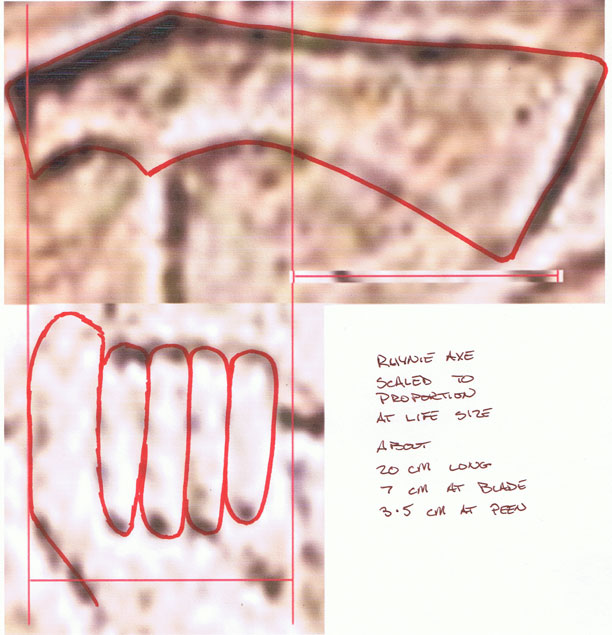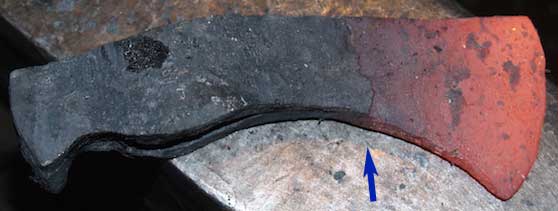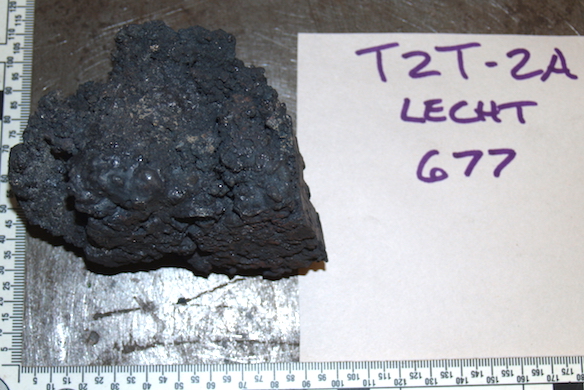
|
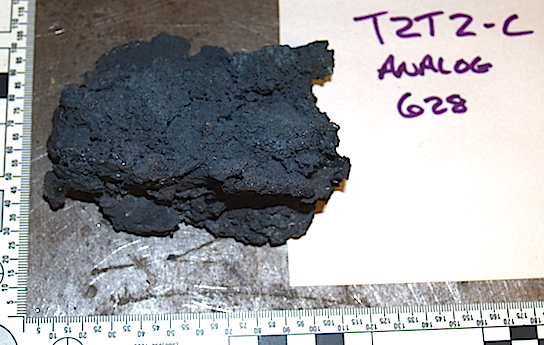
|
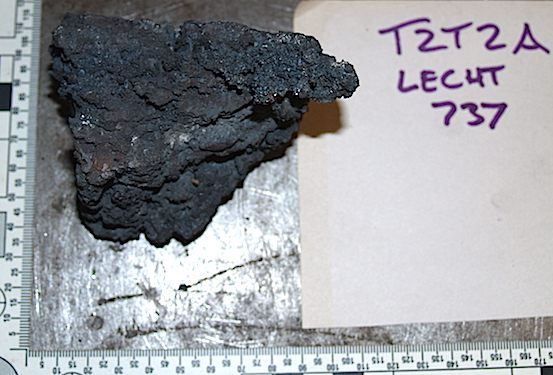
|
Section : Smelt 2.1 at 677 gm
|
Section : Smelt 2.3 at 628 gm
|
Section : Smelt 2.1 at 737 gm
|
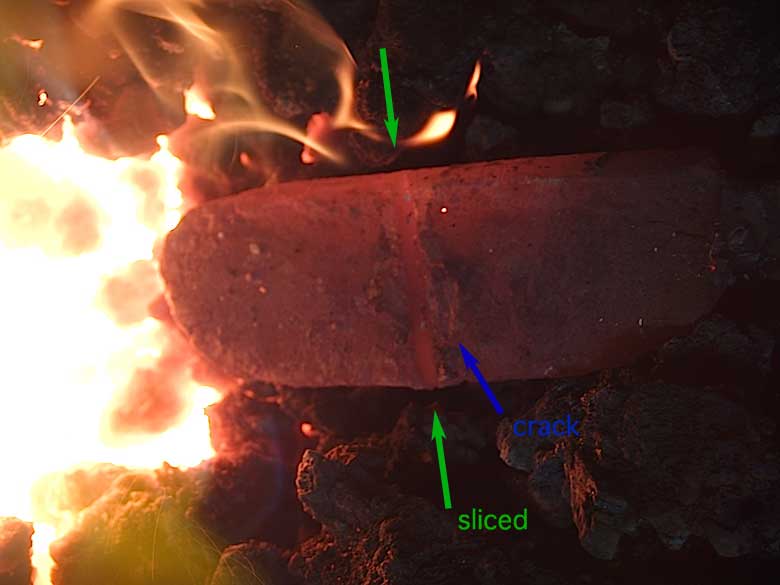
|
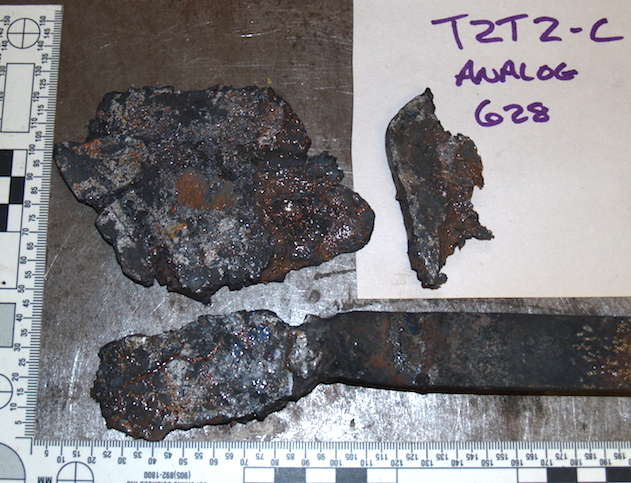
|
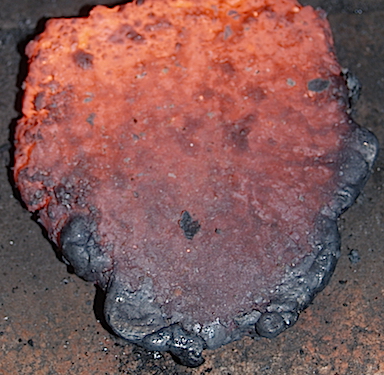
|
After flattening, fold and
weld.
Cut for next fold, along line of developing crack on one
side.
|
At initial flattening, broken
into several pieces
Note pieces MIG welded to bar for ease of holding (used for
all blooms after flattening)
|
At initial flattening.
Note pillow shapes along lower edge, extruded slag
|
|
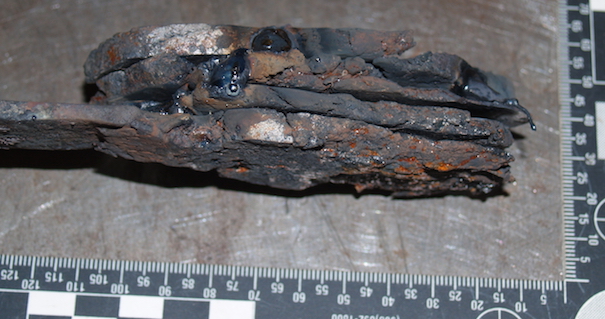
|
|
|
Pieces stacked for first weld
|
|
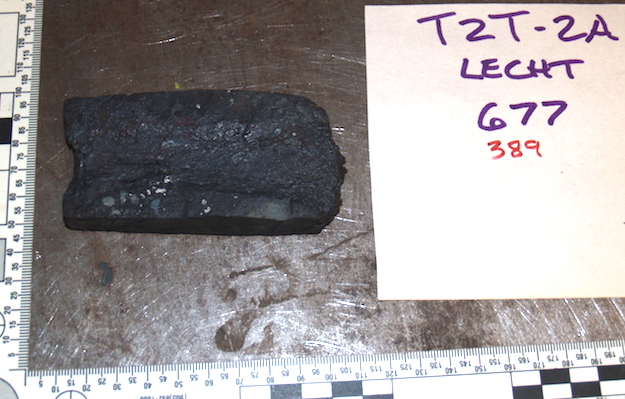
|
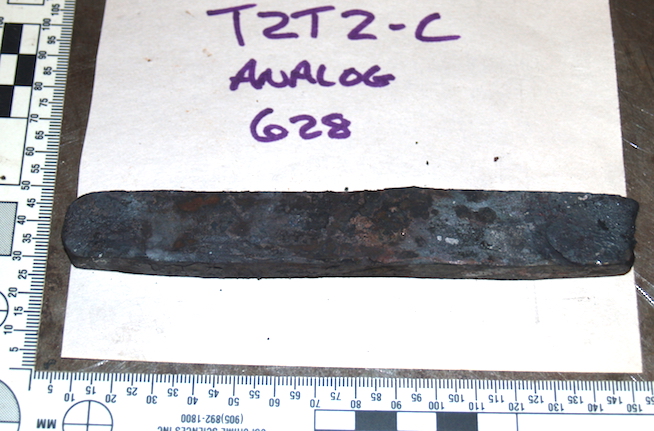
|
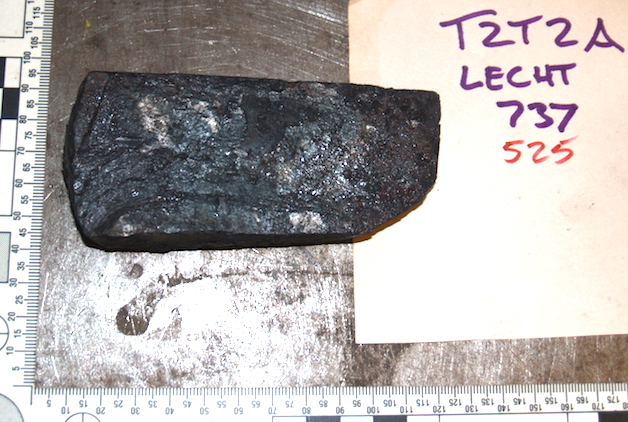
|
Resulting thick bar at 389 gm
Two welding courses
(note surface cracks remaining)
|
Resulting long bar at 258 gm
Three welding courses
|
Resulting thick bar at 525 gm
Two welding courses
|
Total return @ 57 %
|
Total return @ 41 % |
Total return @ 71 % |
